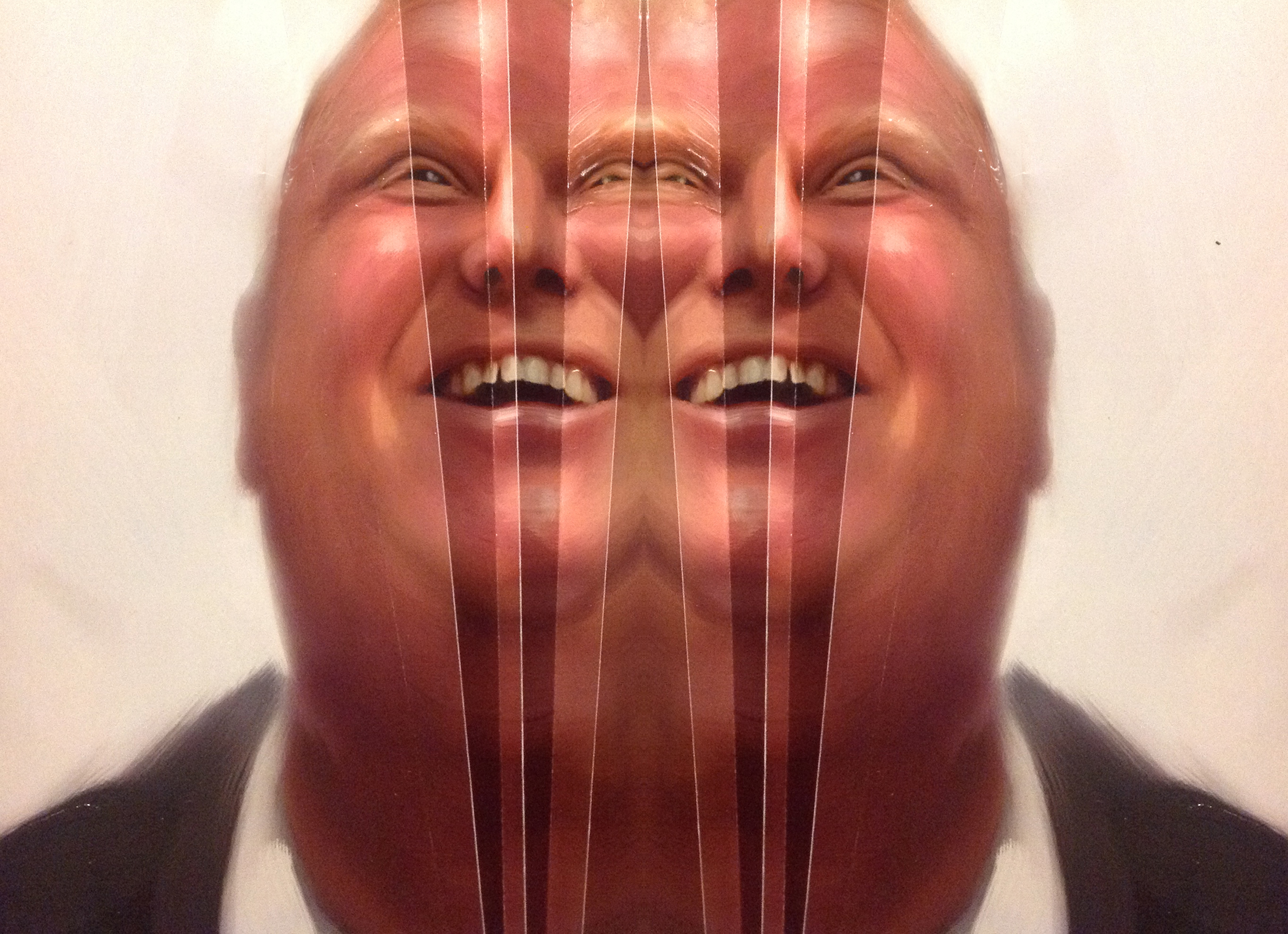My friend Todd and I planned a follow up to our 2007 Nuit Blanche exhibit Secular Confessional. It was not approved.
Gothic Aerobics | Nuit Blanche 2008 | Todd Julie and Jesse Yules
For one night only Toronto’s hip downtown yoga studios will be exposed as the seedy backroom torture chambers they are. We would like to stage a goth-themed exercise class inside one of these studios, combining dominatrix style and attitude with traditional aerobics. Visitors to the exhibit will see something that goes beyond fitness. They will see the mortification of the flesh.
Three actors will be rear projected on a 8 metre screen within the venue. These actors will be dressed as a dominatrix and her two slaves. They will be wearing a combination of vinyl, leather, black make-up and spandex. The dominatrix’s outfit will be tight and restrictive. Her two slaves wear more functional gothic attire, in order to properly execute the moves for the audience (her off-screen slaves). After her initial demonstration the instructor circles her two slaves, correcting them with harsh criticism and a whip. A brutal mistress, she exacts total submission to her work out plan while forcing her on and off-screen slaves to work progressively faster and harder. The pace of the workout will be fueled by the dark rhythms of late 80’s and early 90’s industrial and gothic-techno music.
Her interaction with her off-screen slaves will be similar to the popular ‘Nightmare’ board game series from the 1990’s – she will pretend to single out specific audience members, addressing the ‘silly bitches’ upfront or the ‘jailbait’ in the back. The pre-recorded exercise film will be 25 minutes in length and will run on a loop, seamlessly all night. The tempo of the music accompanying the workout will get faster as the dominatrix’s demands become greater. Strobe lights will flash in the room as the routine hits it’s full intensity.
The lighting in the yoga studio will be dim,, similar to a night club. Yoga mats, will be laid out on the studio floor. The walls of the studio will be adorned with images of bondage and other leather-clad dominatrixes, to further draw out the parallels between torture and exercise.
To encourage participation we will seed the event with at least one volunteer per hour, to insure at least one live person exercising throughout the night. Visitors refusing to join in the work out will be bullied by our on-screen dominatrix.
Gothic Aerobics will be a chance for Nuit Blanche attendees to be more than spectators. A full-on workout will pump them up for the night and raise questions about exercise in the modern era. The exhibit will run for 12 hours.
Artist Statement
Goth culture is synonymous with self –mutilation, loathing and a fascination, if skeptical, with religious contemplation. It is an ideal presentation style for the considerations we wish to raise with the participants in our event. Superimposing gothic imagery over a traditional workout video, we playfully call into question all the body-image issues that motivate such practices. Physical fitness is normally presented in media as entirely positive. This allows participants to engage in the act without much thought about just what they’re engaging in and their reasons for it. While our installation draws out these hidden aspects and motivations for consideration, we believe a proper questioning and consideration of them will ultimately enrich and enliven the experience.
Creators
Todd Julie (www.foveaonline.com)
Todd Julie collaborated with Jesse Yules in The City of Toronto's 2007's Nuit Blanche arts festival, with their installation, The Secular Confession Booth. Todd is a freelance illustrator and painter based in Toronto, Canada. His commercial work has appeared in publications across North America. Todd won Gold at the 2003 National Magazine Awards for 'Best Spot Illustration' and Silver at the 2005 Advertising & Design Club of Canada awards in the same category. A series of Abraham Lincoln portraits, completed for The Boston Globe, appeared in Applied Arts magazine's 2007 awards annual.
Jesse Yules (www.jesseyules.com)
Jesse Yules is a freelance filmmaker and animator based in Toronto. Jesse was awarded Best New Director by the web community Videos.Antville in 2008. He has done music videos for Owen Pallet, Grizzly Bear and Of Montreal.
































